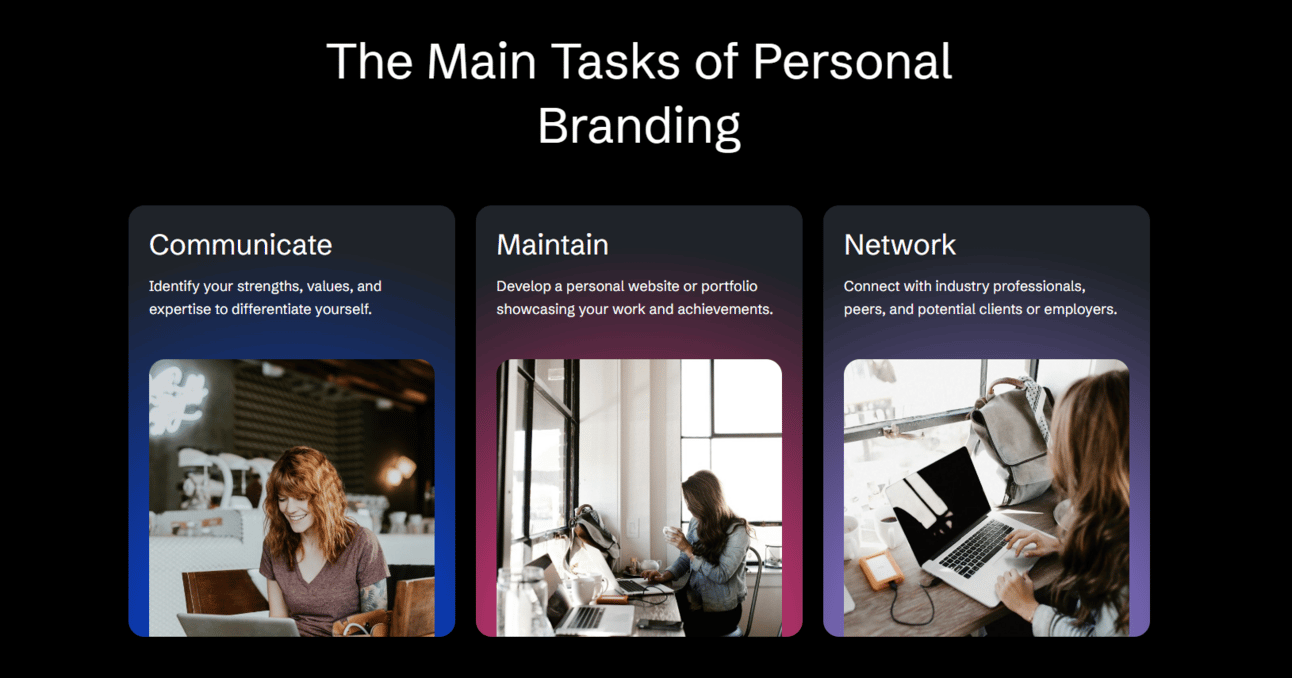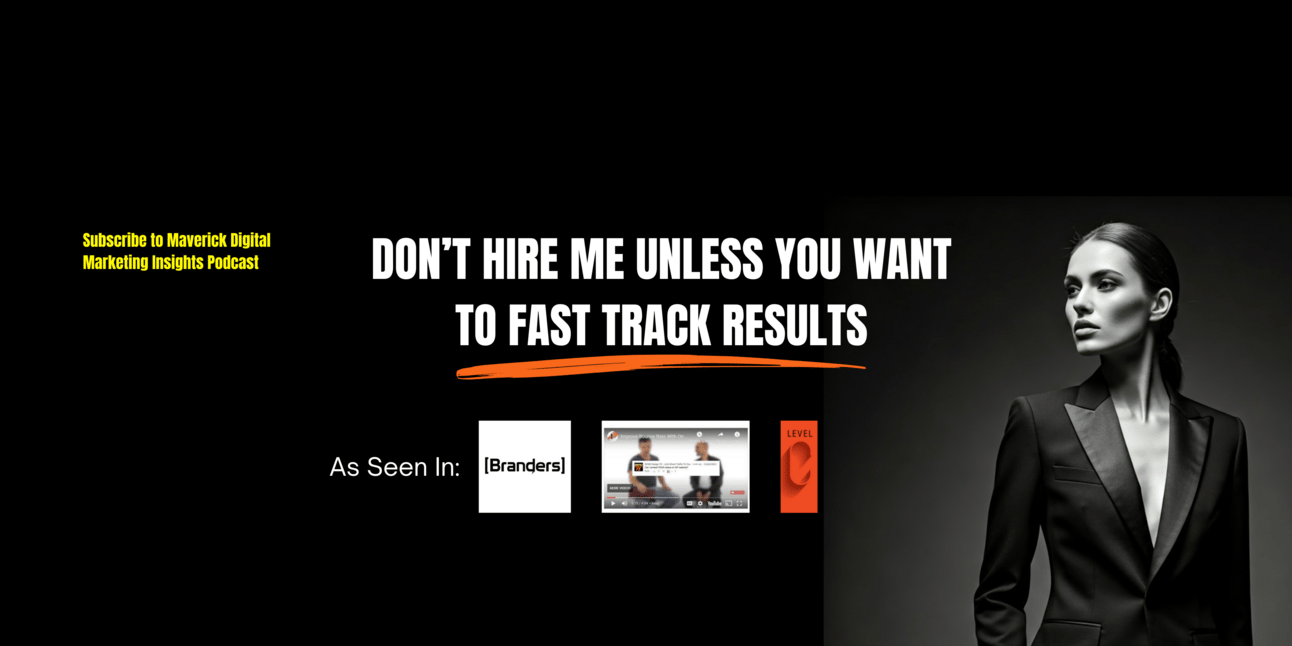You’ll Never Know What The World Has To Offer Unless You Show The World What You Have To Offer.
Introduction
Reclaiming and rebuilding your career can feel like an uphill battle, especially after setbacks. But today's competitive job market offers an invaluable strategy for those looking to bounce back stronger than ever: personal branding.
Crafting a strong personal brand not only helps you highlight your unique skills and expertise but also builds your credibility and makes you stand out in an increasingly crowded professional landscape.
This blog post will guide you through actionable steps to create a remarkable personal brand that accelerates your career recovery. From identifying your strengths to building an impactful online presence, you'll learn how to take control of your narrative and transform challenges into opportunities.
Understanding Your Value
Before you start building your personal brand, you need to understand who you are and what you bring to the table. Reflect on your past accomplishments, skill set, and experiences to identify what makes you unique.
Assess your skills and strengths
Write down your key skills: Are you a master negotiator, a coding genius, or a creative problem solver? Outline your core competencies that set you apart.
Review past accomplishments: What projects or roles have you excelled in? What feedback have you consistently received from colleagues or clients?
Identify your unique selling proposition
Ask yourself:
What problems can I solve better than most people in my field?
Why would someone want to hire or collaborate with me?
How can I leverage my strengths to provide value?
By identifying your unique selling proposition (USP), you create the foundation for your personal brand and establish what you’ll be known for in your industry.
Building Your Online Presence
A well-crafted online presence makes your personal brand visible to the world. Today, if you’re not online, you don’t exist in the eyes of potential employers, collaborators, or clients. Here’s how to make your digital footprint work for you.
Create a professional website

A personal website acts as a home base for your personal brand. Include:
A concise bio outlining your expertise and career ambitions
A portfolio showcasing relevant work samples or case studies
A blog to highlight your thought leadership and insights
Your contact information to make connecting easy
A professinal website is absolutely essential for your personal brand. A professional without a website is like a person without a home.
Optimize your LinkedIn profile

LinkedIn is an essential tool for personal branding. Make your profile compelling by:
Using a professional headshot as your profile picture
Writing a catchy yet professional headline (e.g., "Marketing Strategist | Expert in Growth Campaigns")
Crafting a results-focused about section that highlights your achievements
Listing specific skills and requesting endorsements from colleagues
Sharing relevant content and engaging with industry peers
Establish a cohesive presence across social platforms
Choose 1–3 platforms where your audience is most active (e.g., Twitter, Instagram, or TikTok). Use them to:
Share helpful tips, insights, and curated content relevant to your industry
Interact with followers and respond to comments to foster engagement
Maintain consistent visuals, tone, and messaging aligned with your brand
"Everyone has a personal brand – by design or by default."
Networking Strategies
Networking is key to career recovery and personal branding. It’s not just about who you know but also about who knows you.
Tap into your existing network
Reach out to former colleagues, mentors, and contacts in your field. Share your goals and ask if they can assist with introductions, advice, or opportunities.
Attend industry events
Participate in networking events, conferences, or specialized webinars to expand your circle and stay updated on industry trends. Use platforms like Eventbrite or Meetup to discover relevant opportunities.
Engage online
Join LinkedIn groups related to your profession and actively contribute to conversations.
Follow and comment on posts by influencers in your industry to increase visibility.
Use hashtags on platforms like Twitter to join trending industry discussions.
Networking doesn’t have to feel transactional. Approach it with a genuine desire to connect, learn, and collaborate.
Don’t get caught up in vanity metrics. It’s not about how many followers you have. Its about having the right followers that can help you.
BE SELECTIVE
Content Creation
Content creation is a powerful way to demonstrate your expertise, establish thought leadership, and add value to your community.

GAMMA AI
Start a blog
Create posts that align with your personal brand and offer solutions to problems your target audience faces. For example:
"How to Create a Social Media Strategy That Drives Results"
"The Top 5 Leadership Books Every Manager Should Read"
There are numerous AI tools that make this simple and easy. You can create every peice on content and website with just one AI tool.

Develop video content
Video content drives higher engagement than static posts. Create short, informative videos for LinkedIn or social media platforms. Consider topics like:
Sharing your career lessons or insights
Breaking down technical concepts into digestible bites
Narrating your personal brand's story and your areas of expertise
Invest in a video creation tool that you can create videos, posts and shorts from one video.
Repurpose content
Turn one idea into multiple formats:
Write a blog post, then summarize its key points into a LinkedIn post.
Share quotes from your blog as Tweets.
Repurpose instructional content into short Instagram Reels or TikTok videos.
The more you share useful insights with your audience, the more they’ll associate your name with value and expertise.
Monitoring and Adjusting
Branding efforts require constant monitoring and adaptation to ensure long-term effectiveness. Here's how to track your progress:

Measure engagement
Use analytics tools to track metrics like:
Profile views and post engagement on LinkedIn
Website traffic and bounce rate on your personal site
Followers, likes, and comments on social media accounts
Gather feedback
Ask trusted industry peers or mentors to review your branding efforts. Do they align with how you’d like to be perceived? Use constructive criticism to make improvements.
Adapt to audience needs
Stay tuned to industry trends and adjust your personal branding strategy as market conditions change. Pivot and adapt to maintain relevance and impact.
Building a Better Future with Personal Branding
Personal branding is not just a short-term solution for career recovery; it's an ongoing strategy for long-term growth and success. By understanding your value, building an online presence, networking effectively, and sharing powerful content, you can re-establish yourself as a professional who’s not just employable but in demand.
Take the first step today. Subscribe to our newsletter to get exclusive resources, tips, and strategies to create a standout personal brand and accelerate your career recovery.
